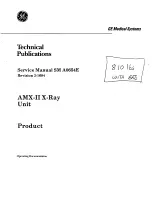
82
Figure 98: Keratoscope
Figure 99: Lens form comparisons
Computerized videokeratoscopes provided a wealth of new information but still suffered from the
same limitations of the century-old earlier techniques. Some of these limitations are related to
the physical limits of reflective technology (permitting examination only of the anterior surface),
and others are related to curvature measurements regardless of the technology used to produce
them. These limitations were less important when most of our work was limited to normal spherical
andcylindrical optics or gross corneal abnormalities (visually significant keratoconus). It was not
until we began altering “normal eyes” (i.e. by refractive surgery) or needed to screen for pathology
before visual loss occurred (e.g. ectatic disease) that the limitations of keratometry and curvature
measurements became both apparent and significant. It is important that we understand how
curvature and elevation measurement differ.
There is a common misunderstanding in the assumption that curvature maps reflect the shape of
the cornea. Curvature, regardless of how it is generated, does not convey shape information. This is
analogous to the difference between the power of a spectacle lens and its shape (curvature is very
similar to power in the paraxial region). Asked to measure a spectacle lens, most ophthalmologists
would place the lens in a lensometer and give you a power reading. The power of the lens may tell
you how the lens will perform optically but conveys nothing about its rather shape, as multiple
lenses of different shapes can have the same optical power
(Figure 99)
.
Elevation is more analogous to using a Geneva lens clock and a caliper. With these, both anterior
and posterior surfaces can be measured as well as lens thickness. Knowing both surfaces and lens
thickness would allow one to reconstruct an identical lens. Knowing the distinct shape of the lens
would also allow you to secondarily compute lens power.
12 Belin/Ambrósio Enhanced Ectasia Display
Содержание Pentacam
Страница 45: ...43 Figure 51 General Overview display showing a low ACV shallow ACD and narrow angle in OS 9 Glaucoma...
Страница 75: ...73 Figure 86 Show 2 Exams Pachymetric showing a case of Fuchs dystrophy 11 Corneal Thickness...
Страница 214: ...212 The following pages remain free and offer space for personal notes...
















































